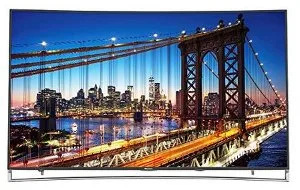Although QD Vision’s message at Display Week in San Jose was bullish, if I worked there I’d be worried. Why is that?

TV set architecture is progressing along two parallel paths: 1) Very thin sets with LED edge lighting, and 2) somewhat thicker sets with direct backlighting. Initially, QD Vision’s Color IQ linear quantum-dot optical element seemed as if it would be the preferred approach for large-screen TV, but it is only applicable to sets with edge lighting. To the extent that direct backlighting takes a significant share of sales, QD Vision’s total available market will decline.
The good news for QD Vision is that quantum-dot backlight enhancement will capture only a small share of the market in 2015. Only 1.3 million TV sets sold in 2015 will be QD-TVs, growing to 18.7 million in 2018, according to IHS/DisplaySearch. So, in the immediate future, there’s plenty of growth to go around.
The bad news for QD Vision is that the direct-backlighting approach captured more than 60% of the market in 2014, according to TrendForce. Fundamental considerations strongly suggest that the penetration of direct backlighting will continue to grow, according to Nutmeg Consultants.*
What are these fundamentals? First, direct backlighting is compatible with local dimming of the backlight, which is required for high dynamic range (HDR), one of the features to be hotly promoted for the next generation of premium TVs. Second, it is now possible to use fewer LEDs with direct backlighting than with edge lighting, reduces cost. Third, direct backlighting eliminates the relatively expensive light-guide plate. Fourth, wide-angle lenses for the LEDs are decreasing the thickness of direct-backlit sets to the point it will not be objectionable to most consumers in most situations.
Both the linear optic of QD Vision and the Quantum-Dot Enhancement Film (QDEF) of 3M and Nanosys will provide the same enhanced color gamut, another of the features to be hotly promoted in new sets. So, how important is HDR likely to be?
For the first generation of UHD sets, the manufacturers stressed the increased pixel content, but the UHD spec encompasses far more than that. When fully implemented in succeeding generations of sets, UHD will also encompass extended color gamut (through quantum dots in LCD sets) and high dynamic range. Set makers are moving energetically in this direction because they have been doing studies that show consumers are not excited by the difference in resolution between 2K and 4K sets. (Some of us may not share this perception, but if you are reading this column it’s a good guess that you are not a typical television consumer.) Typical consumers are, however, excited by increased color gamut and HDR. You can expect advertising for high-end sets to emphasize these aspects of the UHD spec soon.
Hisense 65H10B2
The movement toward direct backlighting and QDEF is illustrated by two press releases distributed by Nanosys in the last few days. The first concerns the launch of Hisense’s 4K ULED H10 Series 65-inch curved smart TV. The ULED series features the QDEF film and HDR. Hisense maintains its ULED TV will “compete with the picture quality of OLED TV and [Samsung’s] SUHD TV at a lower price. For $3000, Hisense provides a 100% NTSC color gamut, 3840 x 2160 pixels, 10-bit color depth, 120Hz frame rate, 900 cd/m² peak luminance, H.265 video coding, and a claimed dynamic contrast of 800 million to 1. You will be able to buy it this month at Amazon.
Significant for the near future is the announcement that AUO will be making Advanced LCD (ALCD) display modules featuring UHD at up to an 85-inch diagonal. AUO’s modules are naturally available to all TV brands that wish to incorporated them. “AUO ALCD technology puts TV brands in position to create devices capable of reaching Rec.2020,” says the release. AUO says it will enter mass production by the end of this year.
At Display Week, after a QD Vision executive said the company was comfortable with the number of edge-lit sets that would continue to be sold, he said casually that of course the company was also looking at other form factors. I am guessing that this “look” is anything but casual. QD Vision probably leads its competitors in quantum dots that resist degradation from high temperature and luminous flux. That knowledge could be leveraged into a lower-cost solution that is compatible with 2D local dimming and HDR, but everyone I talk to agrees the needed materials research will take time. The race is on. – Ken Werner
*Disclosure: The author is Principal at Nutmeg Consultants.

